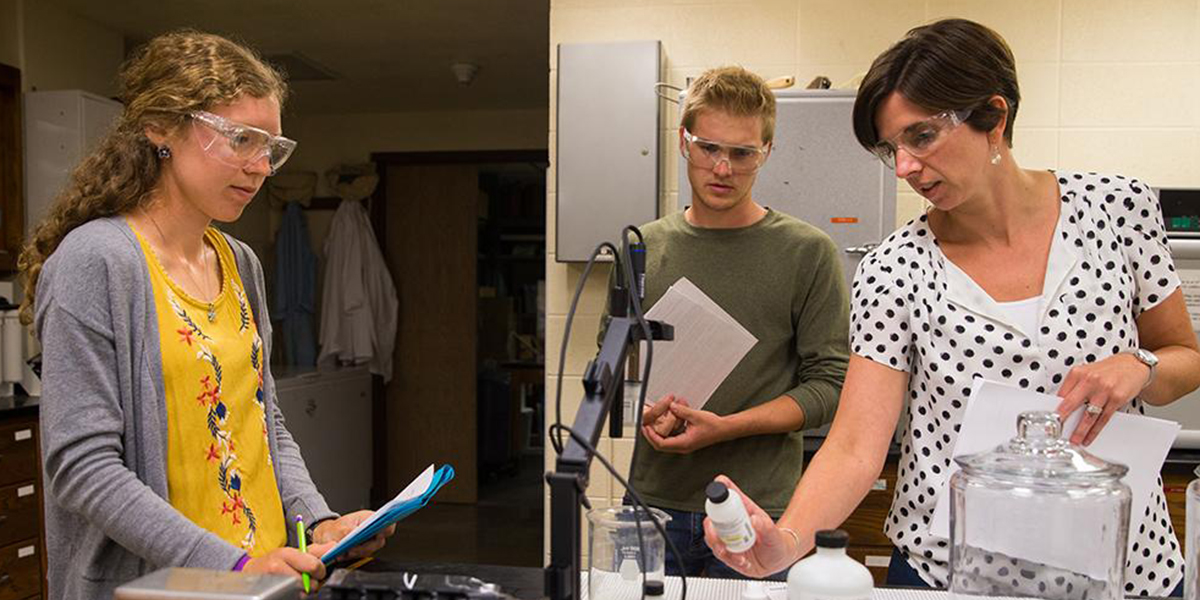
Two University of Wisconsin-Platteville students are contributing to research on the properties of bentonite, a naturally-occurring clay that is used in the construction of waste barriers. Next month, they will present their findings at the annual Research in the Rotunda event in Madison, Wisconsin, where they hope to inform legislators and other state leaders about the critical impacts their research can have on environmental protection.
Ian Breitlow, a senior civil engineering major from Winona, Minnesota, and Katherine Wardinski, a senior environmental engineering major from West Allis, Wisconsin are working alongside Dr. Gretchen Bohnhoff, assistant professor of civil and environmental engineering, on the project “Closing the Gap Between Theory and Evidence: Coupled Phenomena in Unsaturated Bentonite Barriers Under Variable Temperature and Chemical Conditions.”
This year marks the 16th annual Research in the Rotunda event, which will take place on Wednesday, April 17. Held in the capitol building in Madison, the event brings more than 100 students from campuses throughout the UW System to share their research with the public and legislators.
“I am absolutely looking forward to sharing my research and experience with legislators at Research in the Rotunda,” said Breitlow. “I hope people can leave this event understanding how important it is that science in environmental and geotechnical engineering is pushed and promoted as the waste from our population keeps increasing. Also, undergraduate research and coursework complement themselves and contribute to success in college.”
Bentonite is used in the construction of waste barriers — from the everyday municipal waste to hazardous or radioactive waste. The high-swelling properties of bentonite cause it to have low permeability, meaning contamination from the waste is less likely to seep into the soil and groundwater below.
The researchers are using experimental approaches to evaluate coupled phenomena in different bentonites under various thermal, hydraulic and chemical conditions and advance current theoretical models. By researching bentonite’s properties and behavior when exposed to various conditions, they hope to be able to better predict how contaminants migrate through environmental containment systems.
“I have enjoyed the technical aspects of this project,” said Breitlow. “Since the methods we are using to conduct this research are fairly new and uncommon, there is a lot of on-the-spot problem solving and experimentation to test these methods. We have a lot of different types of tests, and I have enjoyed learning about them and how we can modify or add to them to increase our efficiency, as this is a long-term project.”
The work is funded in part by a National Science Foundation grant and is being done in collaboration with a research partner at Villanova University.
“I've enjoyed doing hands-on lab work and collaborating with Villanova University,” said Wardinski. “I believe this research experience has made me more prepared for starting graduate school next fall and Dr. Bohnhoff has been a great research mentor.”
Both students are looking forward to presenting their research next month.
“I think the event will be a great way to showcase the research being done at UW-Platteville,” said Wardinski. “I hope anyone who stops to talk to us about our research will walk away with a better understanding of how bentonite clays are used for waste containment and how this research will help determine better methods of protecting the environment from our waste in the future.”